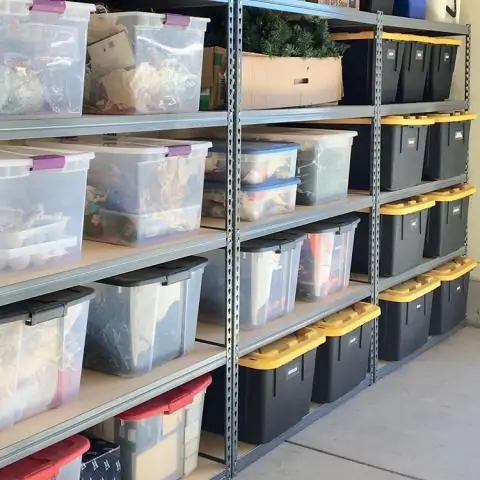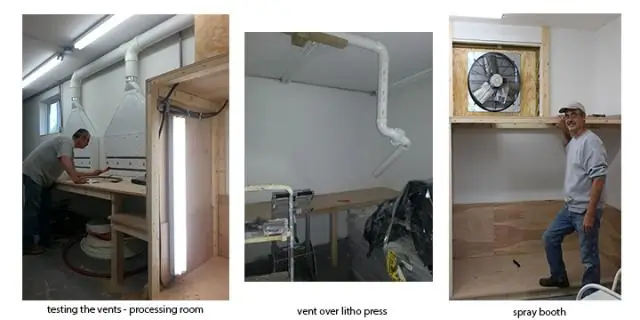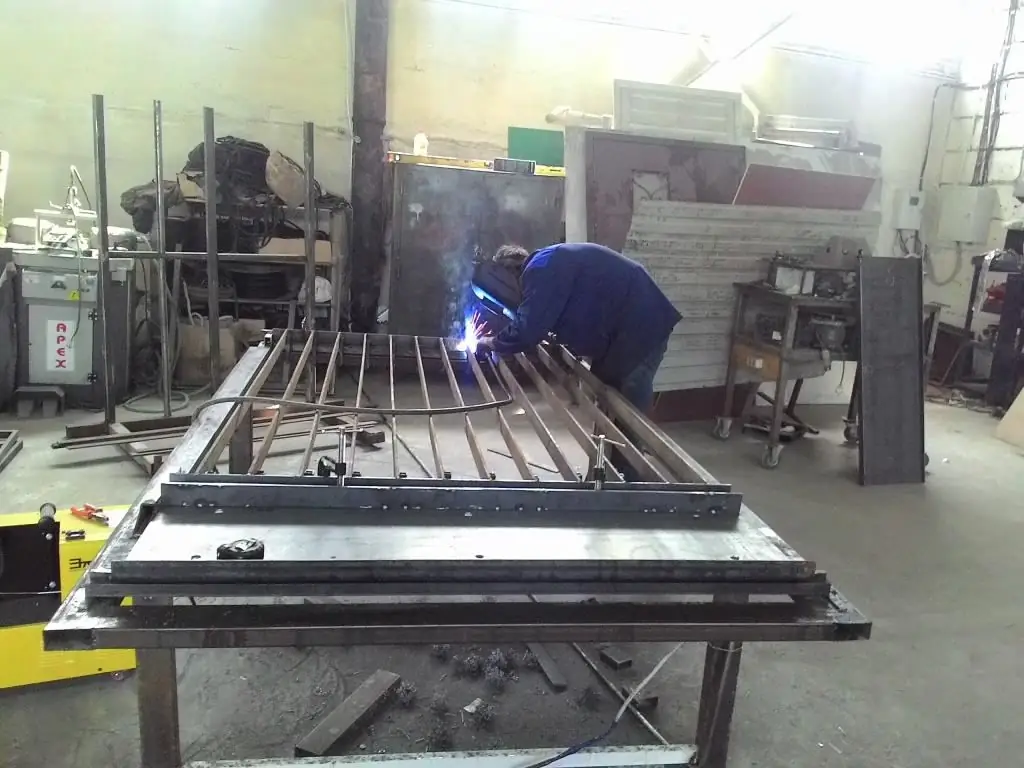
Table of contents:
- Author Bailey Albertson [email protected].
- Public 2024-01-17 22:26.
- Last modified 2025-06-01 07:32.
Do-it-yourself sauna shelf: a step-by-step guide to making

Bath "furniture" is a maximum of functionality, without any decorative and structural surpluses. The shelves and benches are traditionally made from natural wood, which is ideal for use in a steam room. The simplicity of the design and easy-to-handle material allow even a non-professional to independently assemble furniture for a bath, thereby saving up to 30% of the money spent on the sauna setting. Below in a step-by-step guide, we will tell you how to make it yourself.
Content
-
1 Shelf for a bath with your own hands
- 1.1 Layout
- 1.2 Photo Gallery: Shelf Drawings
- 1.3 Material selection
- 1.4 Material calculation
- 1.5 Toolbox
- 1.6 Installation instructions
- 1.7 Finish and coating
- 1.8 Video: self-assembly of the shelf
-
2 Other furniture: a step-by-step guide to assembling the headrest
- 2.1 Selection and calculation of material
- 2.2 Toolbox
- 2.3 Assembly instructions
-
3 How to make a bench for a bath with your own hands
- 3.1 Selection and calculation of material
- 3.2 Toolbox
- 3.3 Assembly instructions
- 3.4 Video: collecting a bench for a bath
- 3.5 Photo gallery: wooden furniture for a bath
Do-it-yourself sauna shelf

Steam room shelf
A shelf is a wooden structure that consists of several shelves that are located at different levels relative to each other. As a rule, the dimensions of each shelf should allow a person to freely take a horizontal position. The presence of the shelf allows those who are soaring to choose the intensity of the heat - according to the principle of convection, hot air rises upward, respectively, the higher the shelf is, the stronger the heat will be.
The shelf consists of a massive supporting frame and cladding boards, without any decorative elements. The general view of the structure is largely reminiscent of the structure of a wooden porch with steps, where each step is a shelf. The shelf can consist of one, two or three shelf levels, depending on the dimensions of the steam room and the wishes of the owner. Self-assembly of the shelf is carried out in several stages:
Layout

Calculating the height of the shelf in a Russian bath and a Finnish sauna
First of all, you need to decide on the size and structure of the future lounger. A shelf in a Russian bath traditionally consists of one or two levels, while a Finnish sauna requires at least three shelves. You should also pay attention to the fact that in the Russian bath they are lying on the shelves, and in the Finnish sauna they steam mostly sitting. There are several basic rules to be guided by when designing a shelf:
- Calculation of the height of the shelf. The minimum distance between the uppermost shelf and the ceiling should be at least 1.1 m. The optimal value is 1.5 m or more - approximately this distance is necessary for free manipulation of the broom.
- Location of levels. The distance between the levels can vary from 60 to 40 cm - a smaller distance contributes to a smoother temperature transition. The lowest tier should rise above the floor by at least 30 cm.
- The length of the sun loungers. The minimum length of the lounger should be at least 1.5 m - this distance is enough to sit with your legs tucked in. To comfortably take a lying position, the lounger should be at least two meters in length.
- The width of the loungers. The minimum width of the lounger should be at least 0.6 m so that you can sit comfortably on it. To take a lying position you need from 0.9 to 1.2 m, depending on individual needs. An exception may be the lowest tier, which is used as a step - its width can be reduced to 0.4 m.
The parameters of the future lounger should be selected based on individual preferences and anatomical features. For example, for someone 1.75 m of length will be quite enough, but for someone even 2 m will be cramped. The shape of the shelves can be rectangular, "G" or "P" shaped - in this case, the choice is made based on personal preferences and the volume of the room, since the form factor does not give any functional advantages. There are also ready-made drawings of the steam room shelf, which can be found below.
Photo gallery: shelf drawings
-

Three-tier shelf drawing - Sauna bench drawing
-

Bunk shelf drawing - Drawing of a two-tier shelf for a Russian bath
-

Three-tier shelf drawing - Drawing of a three-tiered bench for a Finnish sauna
-

Drawing "P" shaped shelf - Drawing "P" shaped shelf for a spacious steam room
-

Corner shelf drawing -
Drawing of a corner shelf for a small steam room
-

Shelf drawing - Drawing "L" shaped shelf
Material selection

Business timber
Traditionally, sauna benches are made of natural wood. It should be borne in mind that not every wood species is suitable for use in high temperature and high humidity conditions. There are several types of wood that are used with varying success to assemble shelves:
- Spruce and pine. Cheap and easy to process material. The main disadvantage of this type of wood is the high content of resins and minerals, which literally begin to flow out at high temperatures. This drawback can be partially smoothed out by the manufacturer, through high-quality processing and drying, but, alas, not in the domestic market.
- Aspen. Strong and durable material. Aspen wood is well suited for use in a steam room, as it does not emit hot resin when heated. At the same time, the cost of aspen is quite high.
- Linden. Medium-strength wood. It is considered an ideal material for bath beds - linden dries quickly, heats up slowly and is easy to process. At the same time, the cost of linden wood is quite democratic. The only drawback of linden is the rapid darkening in a steam room with insufficient ventilation.
- Abashi. African oak. It grows in hot climates, which ideally adapts the wood for use in the steam room. Abasha wood has low thermal conductivity and good strength. A characteristic drawback is the sky-high cost.
- Birch tree. Medium-strength wood. For the manufacture of bath loungers, it is rarely used, since at high humidity it is quickly affected by a fungus and begins to rot. This disadvantage is partially compensated by special processing, but even in this case, it is undesirable to use birch in a steam room.

Wooden beam for shelf assembly
Regardless of which type of wood is preferred, care should be taken to ensure that there are no knots in the material. It is not always possible to achieve their complete absence, but their excessive amount will significantly weaken the strength of the structure. This circumstance is especially important when buying a beam for a supporting frame. When purchasing a flooring material, it is advisable to give your preference to boards with already ground corners or order this operation from the manufacturer.
Material calculation
A timber with a minimum section of 50x70 mm is used as a material for the supporting frame. For binding the carriers, a board from 20x80 mm and above is used. In this case, it is appropriate to be guided by the principle "the thicker the better" - the massive support structure can withstand any weight, especially when it comes to a three-tiered lounger. Planks with a thickness of 10 mm or more can be used as flooring.
The calculation of the material is carried out based on the design features and its dimensions. The support bar and strapping board are sold in running meters, and the flooring boards are in square meters. As an example, consider a drawing of a traditional three-tiered shelf.

Example for material calculation
The optimal distance between the supporting supports is about 60 cm, respectively, for the construction of a three-tiered lounger 1.2 m high, 2 m long and 0.6 m wide shelves, 14.4 linear meters of timber will be needed (six bearing supports for each tier of the corresponding length). You will also need 5.4 m of timber for transverse connections (one for each pair of bearing supports).
Boards tie the structure around the perimeter from above and from below / in the middle, the required number of running meters is determined by calculating the perimeter of each shelf multiplied by two. For the above construction, you will need 31.2 linear meters of the board (double the perimeter of the shelf, multiplied by the number of tiers).
The number of square meters of sheathing board is determined by multiplying the length of the lounger by its width. In this case, you need 3.6 square meters of board to sheathe all three loungers (the length of the shelf, multiplied by its width and multiplied by three).
To assemble a three-tier shelf, according to the above drawing, you will need the following materials:
- Six racks of 1.2 m
- Six racks 0.8 m each
- Six racks of 0.4 m
- Twelve boards 2 m long
- Twelve 0.6 cm boards
- 6 sq. m boards
- Wood screws
- Metal corners
- Wooden nails
Tools
For self-assembly of a multi-tiered lounger, you will need the following set of tools:
- Hacksaw for wood
- Screwdriver
- Drill
- Mallet (wooden hammer)
- Roulette
- A hammer
- Chisel
To install the flooring, the use of wooden nails is preferable - the metal fasteners will be very hot, which can lead to burns. It is possible to install with screws from the reverse side, but this is not very convenient, not reliable enough and requires an ideal calculation.
Installation instructions
There are several options for assembling a multi-tiered lounger, in this case, the assembly of a traditional rectangular shelf, which is most often used, will be considered. The build order is as follows:
-
First of all, the frame of the uppermost tier is assembled. Self-tapping screws can be used for assembly. The first row of vertical bearing racks is screwed to the wall with a step of 60 cm. Previously, at the top of the timber, a "step" is formed for fastening "into the lock".

Shelf frame Connection of a bar into a "lock"
-
A second row of supports with similar "steps" is placed opposite the installed carriers. The tops of the struts are united by a transverse beam. If possible, the side posts should also be screwed to the walls.

Frame installation Two mounted tiers
- All corner joints are reinforced with metal corners for reliability.
- The installed carriers are tied with boards at the top and bottom / in the middle.
-
The next level is formed in the same way. The support beam is fixed to the previous tier and, if possible, screwed to the walls.

Shelved shelves Arrangement of flooring
- The frame is sheathed with boards, with a mandatory gap of at least 1 cm. Between the walls of the steam room and the flooring, there must be a free gap of at least 10 cm to ensure ventilation. For hammering in wooden nails with a drill, holes are drilled of the same or larger diameter by 1-2 mm.
If desired, metal self-tapping screws can be used to mount the flooring, however, in this case, it is necessary to "heat" the caps to a depth of 5 mm in order to further close them with a wooden plug. To avoid the formation of cracks, the attachment point is superficially reamed with a drill, the diameter of which corresponds to the diameter of the screw head.
Finish and coating

Special composition for use in a steam room
For additional finishing and covering of the shelf, you can use special varnishes and impregnations, which will protect the wood from rotting, mold formation and darkening. It should be noted that, ideally, the wood in the steam room cannot be processed - it is enough to simply subject the surface to grinding. With good ventilation, the structure of the tree does not deteriorate during the entire period of operation. However, if the ventilation is far from ideal, it is better to resort to the help of special compounds, among which the following are most often used:
- Acrylic varnishes. Moisture-resistant acrylic-based varnishes create a protective film on the wood surface, which protects the structure from moisture. This type of varnish does not change its structure at temperatures above 100 ° C, which makes it possible to use them even in Finnish saunas.
- Impregnation. Antiseptic impregnations prevent the formation of mold and make the wood more moisture resistant. Unlike varnish, impregnation penetrates deep into the structure of the wood, providing comprehensive protection.
- Bleaches. Specialized compounds through which you can bleach darkened wood.
Before applying any of the above compositions, the surface of the wood must be sanded with sandpaper and cleaned of dust from sanding. You should not purchase cheap products from little-known manufacturers - high humidity and temperature can cause the release of toxic substances from low-quality compounds.
Video: self-assembly of the shelf
Other furniture: a step-by-step guide to assembling the headrest

Traditional headrest
A headrest is a small piece of wood that acts as a pillow in a steam room. The presence of a headrest allows you to sit comfortably on the bench, relaxing your neck muscles and spine. The design of the headrest is simple and contains a minimum of elements, which allows you to assemble it yourself without any difficulties.
Selection and calculation of material
The material for the wooden "pillow" is selected in the same way as in the case of the shelf - the headrest is used in the same conditions. The base of the headrest is made up of two bearing supports and cross bars. In addition to the traditional linden and aspen, cedar, ofram, meranti, abashi and bamboo are also used to assemble the headrest. Small dimensions allow the use of exotic woods without the risk of going over budget. When purchasing material, it is necessary to ensure that there are no knots.
The dimensions of the headrest are primarily determined by the dimensions of the lounger - it can be of the same width or narrower. The ideal dimensions in terms of the structure of the human body are 40 cm long, 45 cm wide and 10 cm high. To assemble a traditional headrest, you need the following amount of material:
- Two blanks 40 cm long and 10 cm high. The minimum thickness of the boards must be at least 2 cm.
- Rail 40x20 mm, length 3.7 m
- Wooden dowels, 16-18 pieces, depending on the number of crossbars.
If desired, metal screws can be used for assembly, but in this case they must be sunk into the surface of the rail and masked with a wooden plug. The presence of a plug is required - this is the only way to exclude the possibility of a burn.

Lightweight round headrest
Tools
To assemble the headrest, you will need the following tools:
- Jigsaw
- Hacksaw for wood
- Roulette
- Drill / screwdriver
- Mallet (wooden hammer)
- Pencil
- Sandpaper
Assembly instructions
Self-assembly of the headrest is carried out in the following order:

Headrest assembly example
- Bearing sidewalls are formed. Marks are marked on the edges of the workpiece: the maximum height of one edge of the sidewall is 10 cm, the other 2 cm. The marks are connected by a smooth rounded line. According to the marks, two rounded blanks are cut with a jigsaw. The resulting parts are sanded with sandpaper.
-
Sawed the slats. The rail is cut into 9-8 pieces of 45 cm long. The saw cut is processed with sandpaper.

Headrest drawing Rounded headrest assembly drawing
- Holes for wooden dowels are drilled on the rails and the end of the supporting sidewalls. The distance must be calculated in such a way that a gap of 1 cm remains between the slats. The drill diameter must be equal to the dowel diameter or exceed it by 1 - 2 mm.
- Dowels are driven into the drilled holes.
If desired, the sidewalls can be formed in the form of an arch, a wave, etc. - the main criterion for choosing a shape is the personal preferences and imagination of the master. Ready-made headrests do well without a protective coating, since after bath procedures they are dried and stored in a place with good ventilation.
How to make a bench for a bath with your own hands

Portable steam room bench
In addition to the stationary shelf, the steam room can also be equipped with portable benches and benches. This is not the most important part of bathroom furniture - many lovers of healing steam can do well without them. Bath benches perform an auxiliary function; they are often used as a step, stand or a secondary place for receiving procedures. Usually in the steam room there is no more than one bench, although in many respects it depends on the size of the room.
Selection and calculation of material
This type of bathroom furniture is distinguished by its simplicity of design - it is quite easy to make a traditional "P" shaped bench by yourself. The material is selected according to the same criteria as in the case of the shelf. The height and width of the bench can be absolutely any, the universal standard is considered to be 1.5 m long, 0.4 m wide and 0.4 m high. Such dimensions allow the bench to be used both for comfortable sitting and as a stand or an additional step.
To assemble a universal bench, you will need the following materials:
- A bar with a section of 7x15 cm. Four bars of 35 cm
- Four parts from a bar, with a section of 7x15 cm
- Two one and a half meter boards, 20 cm wide, 2 cm thick
- Two boards / beams for cross connection, 40 cm long
- Self-tapping screws / wooden dowels
Tools
To assemble the bench, you need the following tools:
- Hacksaw for wood
- Drill
- Screwdriver / mallet
- A hammer
- Chisel
- Sandpaper
Assembly instructions
Self-assembly of the bench is carried out in the following order:

Universal Bench Collection Drawing
- On the legs, grooves are cut for the connection "in the lock". To form a groove, parallel cuts are cut with a depth and a gap of 7 cm. The base of the cut is knocked out with a chisel.
- Trapezoidal parts are formed from four bars, which will play the role of an adapter between the leg and the seat. A groove is formed at the top of the trapezoid for connection with the legs.
- The legs are connected to the adapter in the groove. The junction is fixed by means of a self-tapping screw or a dowel twisted / driven into a pre-drilled hole.
- The seat of the bench is assembled from two boards and crossbars. The distance between the boards must be at least 1 cm.
- The legs are screwed / nailed to the seat. If self-tapping screws are used as fittings, then fastening is carried out from the back side. The holes for the fasteners are pre-drilled.
The assembled bench is completely sanded with sandpaper. Ideally, the finished bench is left in its natural form, without any coating or processing. If desired, for additional protection, you can use high quality acrylic varnishes and impregnations intended for use in a steam room.
Video: collecting a bench for a bath
Photo gallery: wooden furniture for a bath
-

Wooden bench - Bench in the bath with cross-to-cross legs
-

Bunk shelf - Traditional two-tier straight shelves
-

Bunk shelf - Bunk shelf with stand
-

Three-tier shelves - "L" -shaped shelves of three tiers
-

Semicircular headrest - Small semicircular headrest
-

Bunk shelf - "П" -shaped shelves with two tiers
-

Anatomical headrest - Body-conforming headrest
-

Wooden bench - Traditional sauna bench
-

Headrest massager - Headrest for neck and nape massage
By furnishing a steam room with your own hands, you can save money on the services of specialists. At the same time, the result will not look handicraft - the simplicity of the design creates ideal conditions for self-assembly. If you follow the assembly technology, you will get a decent result of your efforts!
Recommended:
How To Make A Bar Stool With Your Own Hands From Wood, Metal And Other Materials + Drawings, Photos And Videos

Bar stools manufacturing options. Required tools, materials used. Step-by-step description of the manufacturing process with a photo
How To Make A Kite With Your Own Hands At Home: Options With Drawings And Sizes + Photos And Videos

DIY kite: the necessary materials, diagrams, drawings, manufacturing steps. How to make a kite of different shapes. Secrets of a Successful Launch
How To Make A Shelf For Shoes In The Hallway With Your Own Hands From Different Materials + Photos And Videos

An original, functional and beautiful shoe rack can be made at home with your own hands. How? Let's tell you
How To Make A Potbelly Stove From A Gas Cylinder With Your Own Hands: Photos And Drawings, Videos And Secrets

Making furnaces of vertical and horizontal types from a gas cylinder with your own hands. Recommendations for the operation and repair of such stoves
Making Metal Doors With Your Own Hands: Technology, Drawings, Equipment, As Well As How To Make Heat And Noise Insulation Correctly

Metal door manufacturing technology. Tools and equipment for self-production of metal doors. Warming and finishing
